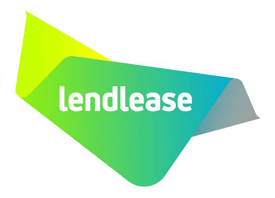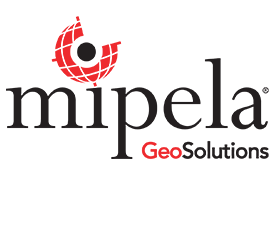Tag Archives: GIS
How mapping retirement homes helps LendLease manage its 14,000 dwellings
LendLease manage 98 Retirement Living Villages across Australia. These dwellings consist of units, villas, townhouses, duplexes, apartments and are a mix on single and multi storey building. These dwellings provide independent and assisted/serviced homes.
Mipela have been working with LendLease to spatially map these dwellings to allow them to more efficiently manage the portfolio. This time consuming task involved the cadastral boundary capture of each village and the footprint of each individual dwelling. This data is then reconciled against LendLease’s CRM to correctly correlate each dwelling’s information. Being able to visually represent and drill down into the corresponding data provides LendLease staff with the information at their fingertips – knowing what the status of a dwelling is and where it is located within a village.
This data will also feed into their asset management system, providing a baseline of stock availability, refurbishment requirements and proximity to others as part of the natural and built landscape.
GIS Lead for the Property Division, Michael Krause said, “Being able to provide the business with visual tools about our dwellings has multiple benefits for our business. We’re just starting on this journey and the expertise of Neil Briton from Mipela has been invaluable in pulling this all together.”
“Now that we have provided this information to the business via a user friendly dashboard tool, we will be looking to further enhancement the data to assist with asset/facilities management.”

Mipela assist Luminous Energy in planning solar farms in Queensland
Farming in Australia is in a state of turmoil. Many farmers are saddled with unsustainably high debts and are hit by unstable crop prices. Extreme weather events, from mass flooding in 2011 to intolerable droughts in 2014, exacerbate the difficulties faced by Australian farmers. By diversifying into solar generation, farmers can regulate their annual income and secure their finances.
Luminous Energy specialises in the planning and development of large-scale photovoltaic power plants, from initial site selection to connection and commissioning. They organise the development of solar farms, taking projects from initial site selection up to the point at which they are ready to be built.
Luminous recently sought assistance from Mipela with data management and mapping support to produce plans suitable for property agreements and site constraint mapping for three proposed solar farm sites in Queensland.
As part of the planning and development process, Luminous are required to submit site development plans to local council and plans to accompany ecological assessments to State and Federal Government. With the decision makers being geographically spread between Australia and the UK rapid revisions of mapping was required. Having someone experienced on the ground who can interpret requirements and turn the work around in a timely manner like Mipela has been critical to the project so far. This well managed revision process has resulted in better project delivery with quickly delivered result in an effective manner.

More than just maps… How do we add value to your GIS?
At Mipela GeoSolutions our team uses a variety of systems and procedures to maximise your GIS productivity. It is not just about the maps. It is about efficiently integrating or massaging the data you have into information products and solutions. These products inform decision making in your organisation.
Mipela have built systems and workflows around GIS Work Request systems, Data Management logs, QC Checklists, Job Tracking, Issue logs. These systems are integrated into our GIS Project Management adding value to your project by ensuring knowledge retention, Continuous Learning, Quality Control and Continuity Assurance.
Value
Value is not just Cost and Time. What is your expectation about the Quality and Service you receive? Service is supported by Communication, which is fundamental to our Project Management system. Regular reporting, emails, phone conversations and meetings are all logged for the benefit of the entire team, not just the parties involved. Our Team approach means we work with you to achieve required outcomes.
The quality of the service we offer is managed by our QC System and peer review process. Our GIS team have degrees in Surveying, Engineering, Mathematics and the Spatial Sciences. This diverse qualification pool brings together different skill sets that are applied to problem solving and crafting your solution. The team is constantly looking to automate and optimise repetitive tasks. This results in faster, more consistent solutions.
Versatility
Our team GIS Specialists are competent in the major Industry Desktop products as well as open-source tools. We are able to provide on site GIS support, but can also work remotely if required.
Our systems are under constant review. All lessons learned are fed back to improve the process and solutions we deliver.
Continuous Learning and Feedback
Feedback and learning from experience are a crucial aspect of the GIS Services team. Using X-info Connect, issues and solutions are captured on the job.
This information is distributed via logs and reports to internal and external teams. Each piece of information is tracked from inception to resolution, including technical solutions and constraints.
Information distribution promotes the knowledge base of the team ensuring growth and development, whilst maximising knowledge retention and technical continuity assurance for our clients.

Popular Posts
A Word from The BossWelcoming Inner West Council
In Focus: New Support Portal
Kamapim Update: Strategic Progress and Future Innovations
Staff Updates: Introducing…
Mipela Leads the Way in Sovereignty and Security
Christmas is coming…
Development Update: X-Info Connect version 8.0
Unlocking Innovation with AWS Serverless: A Proof of Concept
Epic Energy Powers Forward: Contributing to South Australia’s 2030 Renewable Energy Goals
Staying Ahead of Key Security Concerns for Asset Owners
OLDER POSTS:
A word from the Boss
Taking mobile data capture to another level
The importance of Multi-Factor Authentication
Product Update – X-Info Aware
Effective land management across the Gas Pipeline Victoria
It’s the stuff you don’t see that’s keeping you safe
Ampol joins our Client Community!
Ensuring Smoother User Management: Your Collaboration can Expedite the Process
SA Power Networks – Committed to Ensuring Security
Providing you that extra level of assurance
Do you have reporting fatigue?
Focus on the complex, the urgent and the sensitive
Making light work of Safety Management Studies
Safeguarding access and data integrity – the significance of using personal credentials to log onto software
Reporting Stakeholder Information to the Regulators
What integration with SPEAR means to Jemena
A truly epic project
The true power of data automation for Jemena
Tweed Shire Council using technology to deliver value to ratepayers
Using software to safely plant trees
How mapping retirement homes helps LendLease manage its 14,000 dwellings
Stakeholder management and a global wind energy company
ERA Water automates its asset protection with X-Info DBYD suite
ARTC implements X-Info DBYD suite as their automated response system
Beware the Spreadsheet
If you are breaking ground out in the field – we have you covered!
When community focus is key to the success of your project
How Gladstone Area Water Board saves time processing permits using X-Info DBYD suite
Mipela delivers more efficiencies to APA Group
Managing Cultural Heritage across Barada Barna land
Ever wondered how TransLink manage their Bus Stops?
Managing contaminated land compliance
Systematising pipeline risk management
Experience really counts when it comes to stakeholder management
City of Greater Dandenong implements DBYD automated response system
Stakeholder management – the answer is blowing in the wind
Flavour of the month – renewable energy projects
Automation in Remote Regions Delivers Multiple Benefits to Council
Powering through South Australia
There’s no watering down the importance of DBYD responses at Allwater
Tanami Gas Pipeline data integrity and materials traceability
Greater Shepparton City Council moves to X-Info DBYD suite
Putting your pipeline Safety Management Study information in one place
Making Lodging DBYDs Easier
Desktop GIS Analysis for Preliminary Route Selection
X-Info DBYD suite Perfect Fit for ATOM
First Gas Land Management
Managing Your Information
Managing Your Information – from beginning to end
The importance of data across the life of your assets
Mipela assist Luminous Energy in planning solar farms in Queensland
The Value of X-Info Plans Management – Zinfra
Real time data capture and reporting in remote field environment made possible with X-Info Aware
X-Info SMS suite – Safety Management Study
Property Information Service made easy
Your competitive advantage in field service management
Remote field task management and data capture providing results for real time consumption for Veolia
TGP optimises their field workforce with mobile data capture app
More than just maps… How do we add value to your GIS?
Automated back end processes provides Gladstone Area Water Board with improved responsiveness for issuing of permits
SEA Gas improves efficiency of land management
Perfect match: X-Info Connect and Maintenance Connection
News Archive
- Spring 2015
- Winter 2015
- Autumn 2016
- Winter 2016
- Spring 2016
- Summer 2016
- Winter 2017
- Spring 2017
- Summer 2017
- Autumn 2018
- Winter 2018
- Spring 2018
- Summer 2018
- Autumn 2019
- Winter 2019
- Spring 2019
- Summer 2019
- Autumn 2020
- Winter 2020
- Spring 2020
- Summer 2020
- Autumn 2021
- Winter 2021
- Spring 2021
- Summer 2021
- Autumn 2022
- Winter 2022
- Spring 2022
- Summer2022
- Autumn 2023
- Winter 2023
- Spring 2023
- Summer 2023
- Autumn 2024
- Winter 2024
- Spring 2024
Tags
- Stories from our clients (42)
- X-Info DBYD suite (9)
- X-Info Suite (8)
- Product news (7)
- X-Info Connect (6)
- X-Info Aware (5)
- A word from the boss (Hayden McDonald) (4)
- X-Info SMS suite (4)
- X-Info Plans Management (4)
- GIS (3)
- X-Info Stakeholder Management (3)
- Stakeholder management (2)
- Works Management module (2)
- X-Info Assurance suite (2)
- Security updates (1)
- X-Info Lands Management (1)
- X-Info WebConnect (1)
- X-Info Service suite (1)

